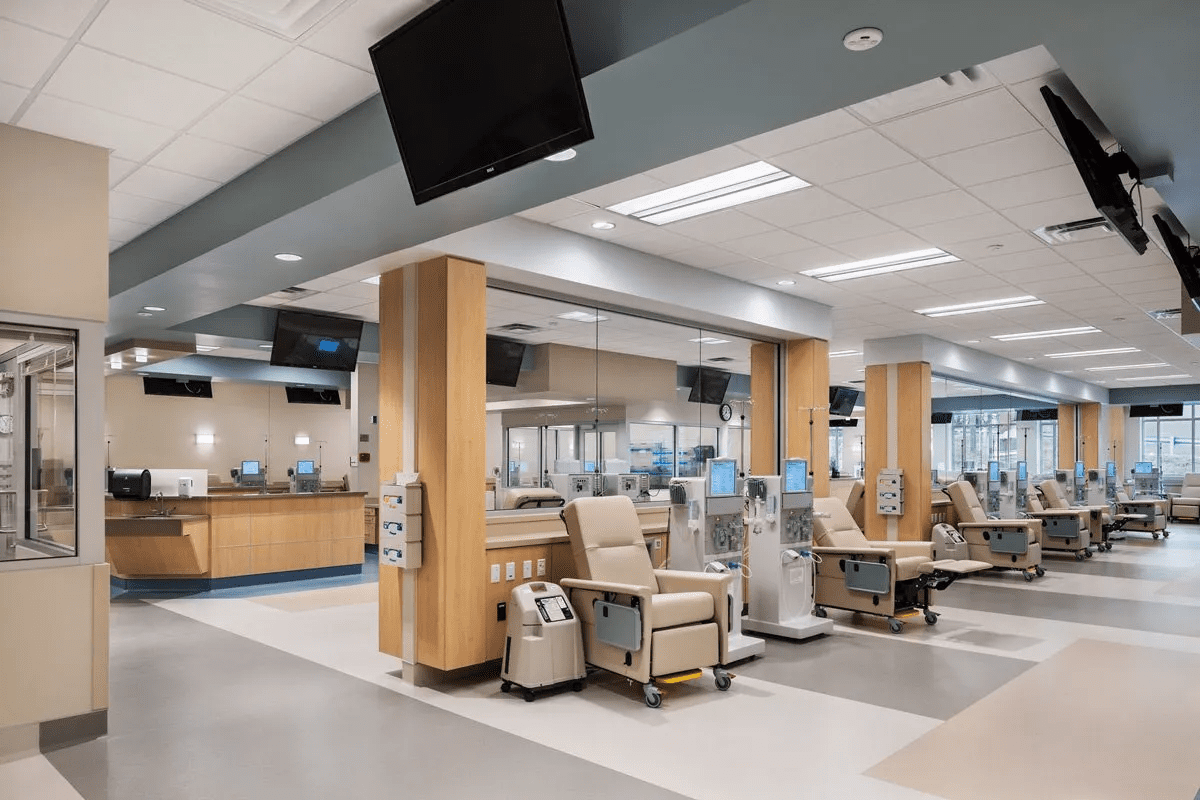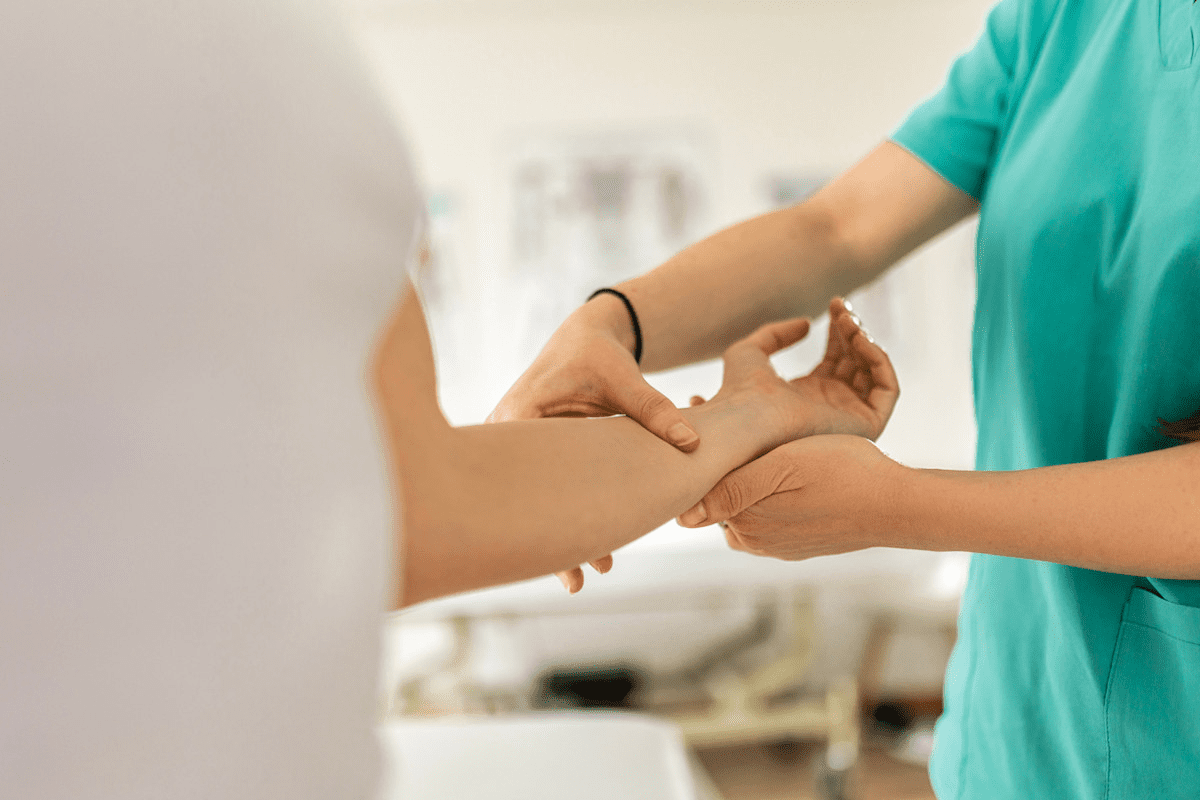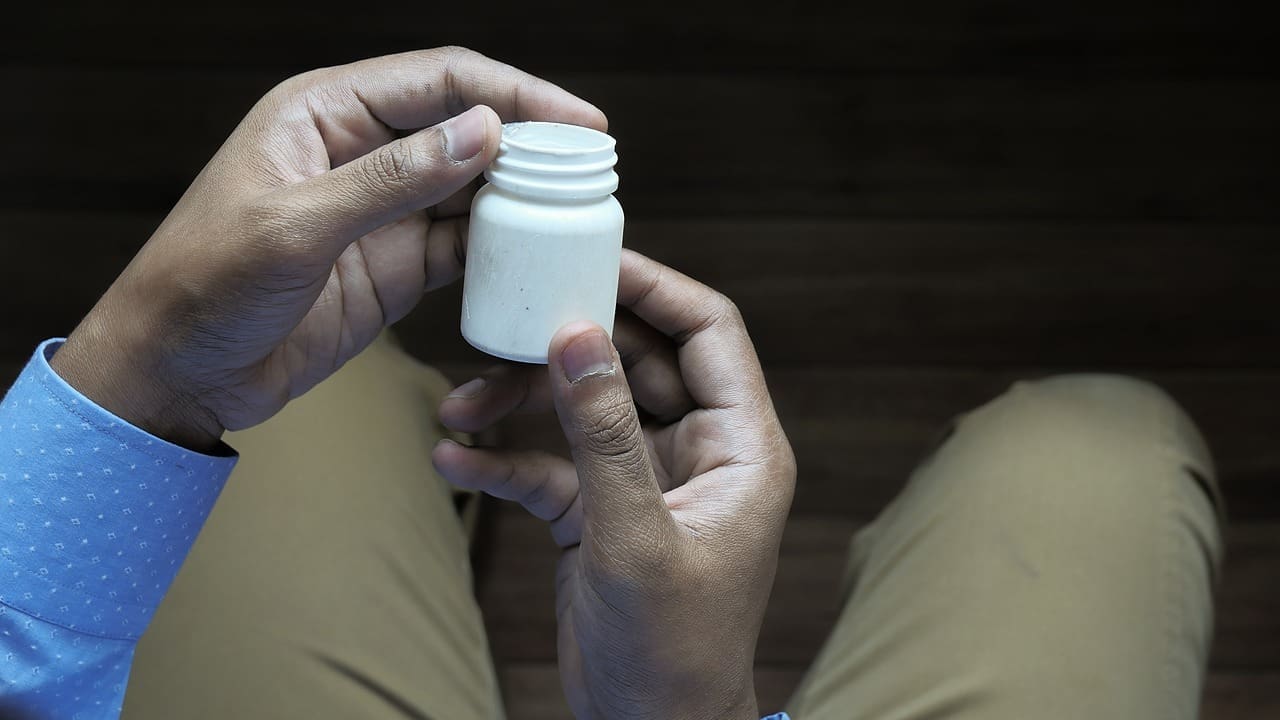Last Updated on November 26, 2025 by Bilal Hasdemir
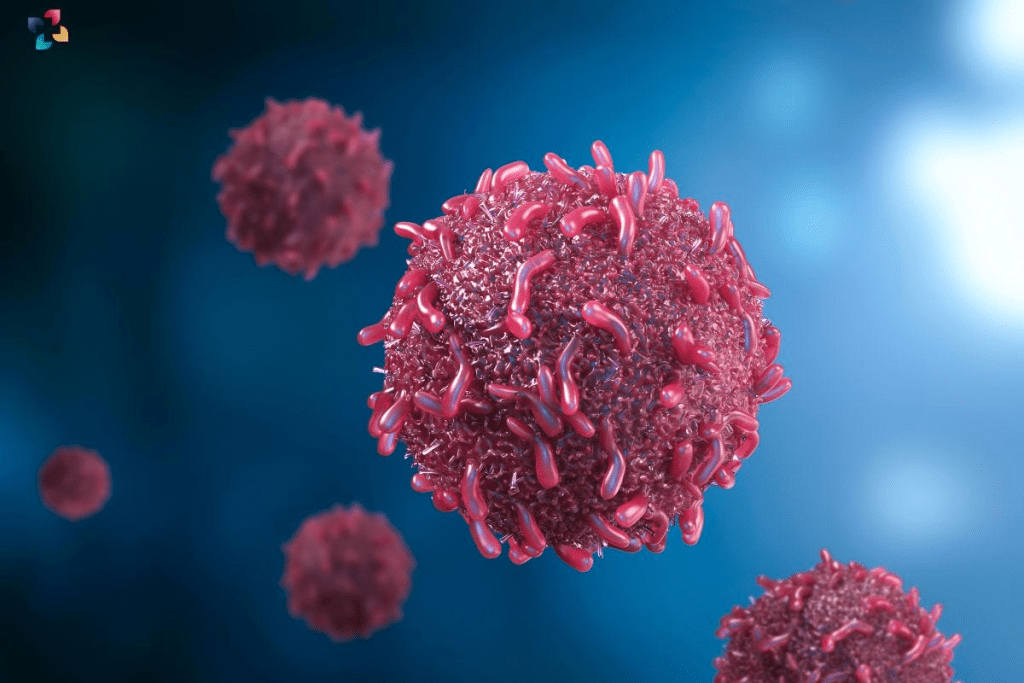
When you get a cancer diagnosis, one of the first things you wonder is how long treatment will last. Chemotherapy duration changes a lot. It depends on the cancer type, how far it has spread, and your health.Chemo session length varies from 30 minutes to several hours. Know what to expect and how to prepare for each visit.
Chemotherapy can feel overwhelming. But knowing what to expect can make things easier. The chemo treatment length is made just for you. Our doctors work with you to create a treatment plan that fits your needs.
Key Takeaways
- Chemotherapy duration varies based on cancer type and stage.
- Individual health factors influence chemo treatment length.
- Personalized treatment plans are developed for each patient.
- Understanding chemo session length helps manage expectations.
- Our medical team provides complete support during treatment.
Understanding Chemotherapy Basics
Learning about chemotherapy is vital for those facing cancer treatment. It’s a treatment that uses drugs to kill cancer cells. Breaking it down helps patients understand what to expect.
What is chemotherapy and how does it work?
Chemotherapy uses drugs to stop cancer cells from growing and spreading. These drugs can be given through IV, pills, or injections. They travel through the blood to find cancer cells. The goal is to stop or slow cancer growth, shrinking tumors and easing symptoms.
A chemotherapy patient, understanding the treatment is key. “Knowing how chemotherapy works and its goals helps me face my treatment better,” she says.
Common goals of chemotherapy treatment
The goals of chemotherapy vary based on cancer type, stage, and patient health. Common goals include:
- Curative chemotherapy: aims to cure cancer by removing cancer cells.
- Adjuvant chemotherapy: used after main treatment to lower cancer return risk.
- Neoadjuvant chemotherapy: given before main treatment to shrink tumors.
- Palliative chemotherapy: aims to ease symptoms and improve life quality when a cure is not possible.
Doctors say knowing these goals helps patients set realistic expectations. This makes the treatment less scary.
“Chemotherapy is not just about treating cancer; it’s about giving patients a chance to live longer, better lives.”
Typical Chemo Session Length: What to Expect
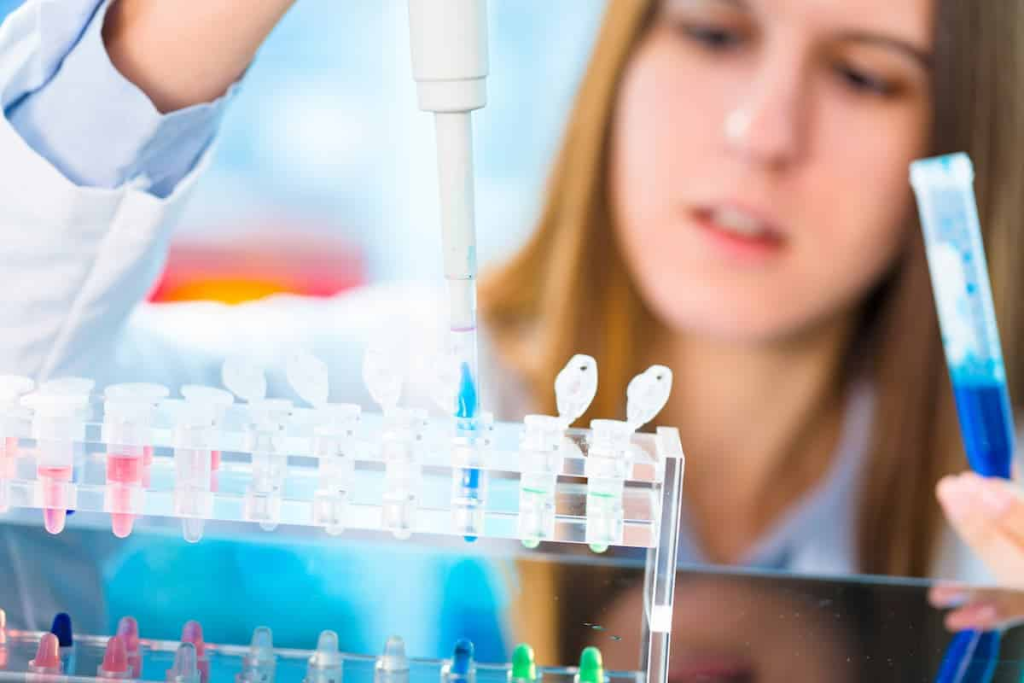
Chemotherapy sessions can last from a few minutes to hours. The time depends on many factors. Each patient’s treatment is unique.
Average duration of different types of chemotherapy sessions
Chemotherapy sessions vary in length. Intravenous (IV) chemotherapy can take 30 minutes to hours. Oral chemotherapy, taken at home, is much quicker.
IV chemotherapy sessions can be short or long. They can last from 30 minutes to 6-8 hours. The drugs used and how fast they are given affect the length.
First-time appointments vs. subsequent sessions
First-time chemotherapy appointments are longer. The team needs to explain the treatment and set up IV lines. This can add an extra hour.
Later sessions are quicker. The team knows the treatment plan, making the process faster. But, the infusion time might stay the same.
Variations in chemo session length by facility type
The place where you get chemotherapy affects the session length. Hospitals might have longer wait times than cancer centers. Some places have faster processes and more skilled staff.
Talking to your healthcare provider about your treatment plan is key. It helps manage your expectations and reduces anxiety.
Factors That Influence Chemotherapy Duration
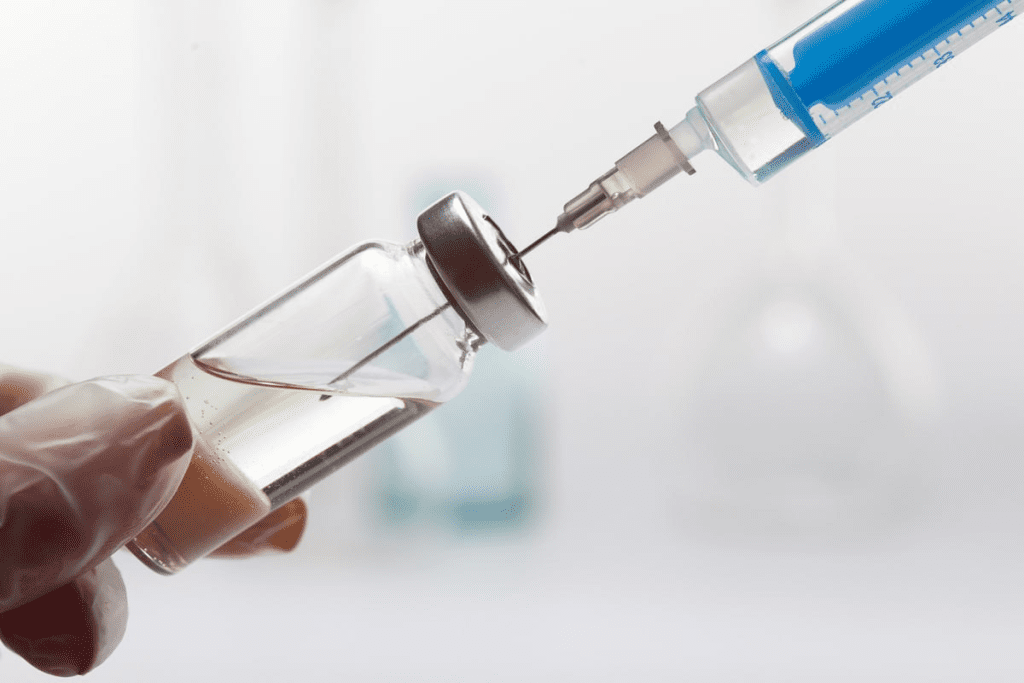
The time needed for chemotherapy varies a lot. Knowing what affects it helps patients understand their treatment better.
Type of Cancer Being Treated
The type and stage of cancer greatly influence how long chemotherapy lasts. Each cancer reacts differently to treatment. Early-stage cancers might need shorter treatments, while more advanced ones could take longer.
A study on cancer treatment found, “The type and stage of cancer at diagnosis are critical in determining the most appropriate treatment strategy and predicting patient prognosis.”
“The duration of chemotherapy is directly related to the cancer type and its aggressiveness,” says a renowned oncologist.
Specific Drugs and Combinations Used
The chemotherapy drugs and how they’re mixed up also affect treatment time. Some treatments are more intense but shorter, while others are less intense but longer.
- Drug combinations can affect treatment length
- Some drugs are used for specific cancer types
- Treatment protocols often involve multiple drugs
For example, a common treatment for breast cancer might include cyclophosphamide, doxorubicin, and paclitaxel. It’s given over several cycles.
Individual Patient Factors
Each patient’s health, age, and how well they respond to treatment also matter. Patients with health issues or who have tough side effects might need their treatment plans changed.
What a patient eats and their lifestyle can also affect how well they handle chemotherapy. Research shows, “Nutrition plays a vital role in supporting patients during chemotherapy, potentially affecting treatment outcomes and duration.”
Healthcare providers can make treatment plans that fit each patient best. This helps make chemotherapy more effective and shorter.
Different Methods of Chemotherapy Administration
Knowing how chemotherapy is given can help patients get ready for their treatment. There are different ways to give chemotherapy, each with its own schedule and timing.
Intravenous (IV) Chemotherapy Timing
IV chemotherapy is a common way where drugs are put directly into a vein. The time it takes for IV chemotherapy can vary a lot.
Session Length: IV chemotherapy sessions can last from a few minutes to several hours.
Frequency: Sessions might be done weekly, bi-weekly, or monthly, based on the treatment plan.
Oral Chemotherapy Schedules
Oral chemotherapy means taking medication in pill or liquid form. This way, patients can manage their treatment at home.
Administration: Patients take the medicine at home, usually at the same time every day.
Monitoring: It’s important to have regular check-ups with healthcare providers to see how well the treatment is working and to watch for side effects.
Other Administration Methods and Their Timeframes
Other methods include intra-arterial, intraperitoneal, and topical chemotherapy. Each has its own use and timing.
| Administration Method | Typical Duration | Frequency |
| IV Chemotherapy | 30 minutes to several hours | Weekly to monthly |
| Oral Chemotherapy | Ongoing, daily | Daily, as prescribed |
| Intra-arterial Chemotherapy | Varies | Depends on treatment plan |
The Complete Chemotherapy Timeline
Understanding the chemotherapy timeline is key for patients. It helps them prepare for their treatment. Chemotherapy has many stages, from the first visit to follow-up after treatment.
Pre-treatment Consultations and Testing
Before starting chemotherapy, patients go through tests and talks. These steps help find the best treatment plan. They also check for any risks or problems.
During these talks, patients talk with their oncologist. They discuss the diagnosis, treatment options, and any questions. The oncologist also looks at the patient’s medical history and talks about the treatment plan.
Tests before treatment include:
- Blood tests to check overall health and find any issues
- Imaging tests like CT scans or MRI to see how far the cancer is
- Other tests based on the cancer type
Treatment Cycles Explained
Chemotherapy is given in cycles. Each cycle has a treatment part and a recovery part. The length and how often cycles happen depend on the cancer, the drugs, and how the patient responds.
A typical cycle might be:
- Getting chemotherapy on a certain day or over a few days
- Having time to recover and get blood cells back
- Doing tests to see how well the treatment is working and if changes are needed
Treatment cycles are made just for each patient. They can be very different from one person to another.
Post-treatment Follow-up Schedule
After treatment ends, patients start a follow-up phase. They are watched for cancer coming back and managed for long-term side effects.
The follow-up schedule includes:
| Timeframe | Follow-up Activities |
| First year | Visits every 3-6 months for exams, blood tests, and imaging as needed |
| Second year | Visits every 6-12 months for ongoing monitoring and testing |
| Beyond two years | Annual visits for late effects and recurrence surveillance |
It’s important for patients to stick to their follow-up schedule. This helps catch any problems early.
Breaking Down a Typical Chemotherapy Appointment
Many patients wonder what happens during a chemotherapy appointment. We’ll explain the steps from start to finish. This includes preparation and monitoring after the infusion.
Pre-infusion Procedures and Wait Times
Several steps happen before the infusion starts. These include blood tests, vital sign checks, and a review of your medical history. Waiting for these and for the drugs to prepare can take 30 minutes to an hour.
It’s a good idea to bring something to make the wait more comfortable, such as a book or a puzzle. Some places offer Wi-Fi, TVs, or refreshments to make it more pleasant.
The Actual Infusion Process
The infusion process can last from a few minutes to hours. It depends on the type of chemotherapy and the drugs used. Some treatments are given through a needle or catheter, while others are taken orally.
During the infusion, patients are seated comfortably. Medical staff watch closely. The infusion rate can be adjusted based on how the patient is tolerating the treatment.
Post-infusion Monitoring
After the infusion, patients are monitored for reactions. This monitoring can last from 15 minutes to an hour. Medical staff check how you’re feeling and give instructions on care after treatment.
Knowing what happens during a chemotherapy appointment can help patients feel more prepared. It can make them less anxious about their treatment. By understanding what to expect, patients can better navigate their chemotherapy journey.
Chemotherapy Cycles and Treatment Length
Knowing about chemotherapy cycles is key for patients. It helps them understand what to expect during treatment. Chemotherapy is given in cycles to let the body recover between treatments.
The Cycle Concept Explained
A chemotherapy cycle is the time between treatments. It includes getting the drugs and then resting. The cycle’s length depends on the cancer type, drugs, and the patient’s health.
For example, a common cycle might be getting treatment on one day. Then, there’s a break of two to three weeks before the next treatment. This pattern is repeated for months, based on the treatment plan.
Common Cycle Patterns
Chemotherapy cycles can differ in length. Here are some common patterns:
- 3-week cycles, where treatment is given on day one, and then repeated every 21 days
- 4-week cycles, with treatment on days one and eight, followed by a recovery period
- Other patterns may involve weekly treatments or continuous infusion over several days
The cycle pattern used depends on the treatment plan and how the patient responds.
Total Treatment Duration Expectations
The length of chemotherapy treatment varies. It depends on the cancer type, stage, and treatment goals. Some patients may get treatment for a few months, while others may need it for a year or more.
For example, adjuvant chemotherapy for breast cancer might last 3 to 6 months. Treatment for lymphoma or leukemia can go beyond a year. Knowing the expected treatment length helps patients prepare.
Understanding chemotherapy cycles and treatment length helps patients navigate their care. It allows them to make informed decisions about their treatment.
How Cancer Type Affects Chemotherapy Duration
Chemotherapy treatment time changes a lot based on the cancer type. Each cancer is different, affecting how and for how long chemotherapy is given.
Breast Cancer Chemotherapy Timelines
Breast cancer treatment often includes chemotherapy, surgery, and radiation. The time for chemotherapy can be from a few months to over a year. This depends on the cancer’s stage and type.
Early-stage breast cancer patients might get chemotherapy for 3 to 6 months. Those with more advanced cancer could need treatment for up to a year or more.
Lung Cancer Treatment Durations
Lung cancer chemotherapy can be given in different ways, like through an IV or by mouth. The treatment time for lung cancer changes based on the cancer’s stage and type.
- Non-small cell lung cancer (NSCLC) might get chemotherapy for 4 to 6 cycles, lasting 3 to 4 months.
- Small cell lung cancer (SCLC) also needs 4 to 6 cycles of chemotherapy. But, the treatment plan is usually shorter, lasting 3 to 4 months.
Colorectal Cancer Chemotherapy Schedules
Colorectal cancer treatment often includes chemotherapy, surgery, and sometimes radiation. The chemotherapy schedule changes based on whether it’s given after surgery (adjuvant) or before surgery (neoadjuvant).
Colorectal cancer chemotherapy is usually given in cycles of 2 to 3 weeks. Treatment typically lasts about 6 months.
Lymphoma and Leukemia Treatment Timeframes
Lymphoma and leukemia are blood cancers needing different chemotherapy approaches. The treatment time varies a lot based on the cancer type and stage.
- Lymphoma chemotherapy is often given in cycles. Treatment can last from a few months to over a year.
- Leukemia treatment is more intense. It includes induction, consolidation, and maintenance phases. It can last several years.
It’s important for patients to know how their cancer type affects chemotherapy duration. Knowing what to expect helps them plan their lives during and after treatment.
Patient Experiences with Chemo Session Length
Real stories from patients who have had chemotherapy show how different treatment times can be. These stories help set realistic expectations and lower anxiety for those starting treatment.
First-hand Accounts of Treatment Duration
Chemotherapy session lengths vary a lot. Her story shows how important preparation and medical staff support are.
“I was surprised by how long the sessions were, but the nurses were very supportive and helped me make the most of my time there.”
These personal stories highlight how different chemotherapy sessions can be. The length depends on the cancer type, the treatment plan, and the patient’s health.
Common Misconceptions About Treatment Time
Many patients think all chemotherapy sessions are long and hard. But, not all sessions are long. Some can be quite short.
| Chemotherapy Type | Typical Session Length | Frequency |
| Intravenous (IV) Chemotherapy | 1-4 hours | Weekly or every 3 weeks |
| Oral Chemotherapy | N/A (taken at home) | Daily or as prescribed |
| Combination Therapy | Varies (often longer) | Varies (often every 2-4 weeks) |
Clearing up these misconceptions and knowing the details of your treatment can greatly improve your experience.
We share patient experiences and accurate info to prepare people for chemotherapy. This helps them feel more confident and less uncertain during their treatment.
Preparing for Long Chemotherapy Sessions
Long chemotherapy sessions can be tough, but there are ways to make them easier. Getting ready for chemotherapy is key to handling its effects on your daily life.
What to Bring to Make Time Pass More Comfortably
Choosing the right items for chemotherapy can really help. Here are some must-haves:
- Entertainment: Books, e-readers, tablets with movies or TV shows, and chargers for your devices.
- Comfort Items: A favorite blanket, cozy pillow, or comfy clothes can make a big difference.
- Snacks and Drinks: Even though rules vary, bringing your favorite snacks or a refillable water bottle can be comforting.
- Personal Care Items: Lip balm, hand sanitizer, and other personal care items you find comforting.
Practical Tips from Experienced Patients
Patients who’ve been through chemotherapy share useful tips. Here are some:
“I brought a puzzle book and colored pencils to my chemo sessions. It was a great way to relax and keep my mind engaged.” – A breast cancer survivor
- Plan Ahead: Arrive early to do paperwork and get settled.
- Stay Hydrated: Drink lots of water before, during, and after your session.
- Bring a Companion: Having someone with you can offer emotional support and help pass the time.
- Be Prepared for Side Effects: Know the possible side effects and have a plan for managing them.
Being ready and knowing what to expect can make chemotherapy easier. As one patient said, “It’s about finding ways to make the journey as comfortable as possible.”
Recovery Time Between Chemotherapy Sessions
Recovery time between chemotherapy sessions can vary a lot. This depends on many factors. Knowing these factors and typical recovery patterns helps patients prepare for their treatment.
Typical Recovery Patterns After Treatment
After each chemotherapy session, the body starts to recover. It repairs and regenerates damaged cells. The recovery time can change based on the type of chemotherapy, the patient’s health, and how well their body responds to treatment.
Patients often feel tired, nauseous, lose their hair, and have changes in appetite during recovery. How bad these side effects are and how long they last can differ a lot from one person to another.
Factors That Affect Recovery Time
Several things can affect how long it takes to recover between chemotherapy sessions. These include:
- The type and stage of cancer being treated
- The specific chemotherapy drugs and their dosages
- The patient’s age and overall health
- Nutritional status and lifestyle factors
- Presence of any comorbid conditions
Good nutrition is key to recovery, as studies show. Eating a balanced diet full of important nutrients helps the body recover faster.
| Factor | Impact on Recovery Time |
| Type of Cancer | Affects the intensity and duration of treatment |
| Chemotherapy Drugs | Different drugs have varying side effect profiles |
| Patient’s Age | Older patients may require longer recovery times |
| Nutritional Status | Adequate nutrition supports faster recovery |
By knowing these factors and typical recovery patterns, patients can prepare better for what’s ahead. They can work closely with their healthcare team to improve their recovery.
Modern Developments Affecting Chemotherapy Duration
Recent advancements in cancer treatment are changing how long chemotherapy lasts. The field of oncology is making big strides, thanks to targeted therapies and drug delivery systems. These changes are reshaping how we treat cancer.
Targeted Therapies and Their Impact on Treatment Time
Targeted therapies have changed cancer treatment by focusing on specific cancer cells. They are more effective and safer for healthy cells than traditional chemotherapy. This means treatments can be shorter and more effective.
Examples of targeted therapies include:
- Trastuzumab (Herceptin) for HER2-positive breast cancer
- Rituximab (Rituxan) for certain lymphomas
- Erlotinib (Tarceva) for non-small cell lung cancer
These therapies can be used alone or with chemotherapy. This can make treatments shorter by being more effective and reducing unnecessary treatments.
Advancements in Drug Delivery Systems
Drug delivery systems are also key in changing chemotherapy duration. New technologies like nanoparticles and implantable devices are making treatments more efficient and less harmful.
| Delivery System | Description | Impact on Treatment Time |
| Nanoparticle-based delivery | Targets cancer cells more precisely, reducing harm to healthy tissues | Potential reduction in treatment cycles |
| Implantable devices | Provides localized treatment, minimizing systemic side effects | Can shorten overall treatment duration |
| Infusion pumps | Delivers chemotherapy drugs continuously over a set period | Can optimize treatment schedules |
These modern developments are not only improving patient outcomes but also making life better during and after treatment. As research keeps going, we can expect even more positive changes in chemotherapy duration.
Managing Life During Extended Chemotherapy Treatment
Managing life during long-term chemotherapy requires a detailed plan. It’s about keeping your health and quality of life up. As treatment goes on, you’ll need to change your lifestyle to handle therapy’s demands.
Work and Family Considerations
It’s key to balance work and family life during long chemotherapy. You might need to change your work schedule or find flexible work options. Talking openly with your employer and coworkers can make your work environment more supportive.
Your family is also very important. They can offer emotional support and practical help. Keeping communication open in your family helps deal with the emotional side of long treatment.
Financial Planning for Long-term Treatment
Long-term chemotherapy can be expensive. Look into financial help like insurance, government aid, and non-profit organizations for cancer patients.
- Check your insurance to know what’s covered and what you’ll pay out of pocket.
- Make a budget for medical costs and any lost income.
- Get advice from financial experts who know about medical bills.
Emotional Coping Strategies
Dealing with chemotherapy’s emotional side is vital for your mental health. Try mindfulness, support groups, and counseling for help.
Doing things that make you happy and relaxed can also help. Stay positive and focus on the now to build your strength.
By managing your life well during long chemotherapy, you can face treatment’s challenges better. This improves your overall quality of life.
Conclusion
Knowing how long chemotherapy lasts is key for patients starting treatment. We’ve looked at what affects chemotherapy time, like the cancer type, drugs used, and patient health.
Chemotherapy time can differ a lot between patients. Things like treatment cycles, how drugs are given, and recovery times matter. Knowing this helps patients plan better and get ready for their care.
Our institution is all about helping international patients with chemotherapy. Our team works hard to give patients the care they need, from the first visit to after treatment. We aim to make chemotherapy easier, supporting and guiding patients every step.
Understanding chemotherapy time and what affects it helps patients feel more confident and clear about their treatment. We’re here to support patients through their chemotherapy journey, providing top-notch care and kindness.
FAQ
How long does a typical chemotherapy session last?
Chemotherapy sessions can last anywhere from 30 minutes to several hours. This depends on the type of treatment, the drugs used, and the patient’s health.
What factors influence the duration of chemotherapy treatment?
Several things can affect how long chemotherapy lasts. These include the cancer type, its stage, the drugs used, and the patient’s health and response to treatment.
How are chemotherapy cycles structured, and how do they impact treatment duration?
Chemotherapy cycles have treatment and rest periods. They can be 3-week or 4-week cycles. The total treatment time depends on how many cycles are needed, based on the cancer type and treatment goals.
Can the method of chemotherapy administration affect the length of treatment sessions?
Yes, how chemotherapy is given can change session length. For example, IV chemotherapy takes longer than oral chemotherapy. Other methods, like injections or infusions, also have their own timing.
How does the type of cancer being treated influence chemotherapy duration?
Different cancers have different treatment plans. This can affect how long chemotherapy lasts. For instance, breast cancer, lung cancer, and lymphoma may have different treatment times based on their specific plans.
What can patients do to make their chemotherapy sessions more comfortable?
Patients can make their sessions more comfortable by bringing items like books or comfortable clothes. Experienced patients suggest staying hydrated, eating lightly before treatment, and having a support person present.
How long does it take to recover between chemotherapy sessions?
Recovery time between sessions varies. It depends on the patient’s health, the type of chemotherapy, and the dose. Some recover quickly, while others need more time. Overall health and side effects can affect recovery.
Are there any modern developments that are changing chemotherapy duration?
Yes, new cancer treatments and drug delivery systems are changing chemotherapy duration. These advancements can sometimes shorten treatment times or make it more manageable.
How can patients manage their daily life during extended chemotherapy treatment?
Managing daily life during extended treatment involves planning for work, family, and finances. It also includes emotional coping strategies. Creating a support network and prioritizing self-care are helpful.
What should patients expect during the complete chemotherapy timeline?
The chemotherapy timeline includes pre-treatment, treatment cycles, and follow-up. Understanding this can help patients prepare for their treatment journey.
How long does a chemotherapy appointment typically take from start to finish?
A typical appointment includes pre-infusion, the infusion, and post-infusion monitoring. The total time can range from a few hours to a full day, depending on the treatment plan.
References
- Donmez, D., Soysal, T., & Bayraktar, O. (2025). Impact of Time-to-Treatment Initiation and First Inter-Cycle Delay on Outcomes in Hodgkin Lymphoma. Journal of Clinical Medicine, 14(12). https://www.mdpi.com/2077-0383/14/12/4085
- Henderson, D., et al. (2024). The Impact of Inter-Cycle Treatment Delays on 5-Year All-Cause Mortality in Early Breast Cancer. Journal name (via ScienceDirect). https://www.sciencedirect.com/science/article/pii/S0959804924009572



